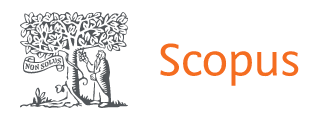Сорбционная способность ультрафильтрационных мембран и потенциал поля поверхностных сил в растворах молочных белков
Аннотация
В работе представлен анализ литературных данных по исследованию сорбционной способности мембран и потенциала поля поверхностных сил. Сформулирована цель работы и на основании литературного обзора выполнен выбор исследуемых ультрафильтрационных мембран УАМ150 и УПМ-100. Методом переменных концентраций проведены экспериментальные исследования по сорбционной активности ультрафильтрационными мембранами белка из подсырной сыворотки. Получены численные значения равновесного коэффициента распределения белка в мембранах УАМ-150 и УПМ-100, и растворах молочной сыворотки в диапазоне изменения концентраций белка от 9 до 32 г/л при температурах от 293 до 308 К. Проанализировано влияние температуры и концентрации раствора молочного белка на сорбционную способность ультрафильтрационных мембран УАМ-150 и УПМ-100. На основании экспериментальных данных найдены численные значения эмпирических коэффициентов для теоретического расчета равновесного коэффициента распределения. Рассчитан потенциал поля поверхностных сил полупроницаемых мембран УАМ-150 и УПМ-100 и интерпретировано его изменение в зависимости от температуры и концентрации молочного белка
Скачивания
Литература
2. Polyanskiy K.K., Shaposhnik V.A., Ponomarev A.N., Molochnaya promyshlennost', 2004, No 10, рр. 48-49.
3. Mironchuk V.G., Grushevskaya I.O., Kucheruk D.D., Zmievskiy Yu.G., Membrany i membrannye tekhnologii, 2013, Vol. 3(1), рр. 3-8.
4. Khramtsov A.G., Nesterenko P.G. Tekhnologiya produktov iz molochnoy syvorotki, M, DeLi print, 2004, 587 р.
5. Lazarev V.A. Razdelenie i kontsentrirovanie molochnoy syvorotki na ul'trafil'tratsionnykh i obratnoosmoticheskikh membranakh: diss. … kand. tekhn. Nauk, M, RKhTU, 2015, 119 р.
6. Abonosimov O.A., Lazarev S.I., Abonosimov D.O., Sorbtsionnye i khromatograficheskie protsessy, 2013, Vol. 13, No 2, pр. 207-212.
7. Chalykh A.E., Diffuziya v polimernykh sistemakh, M., Khimiya, 1987, 312 р.
8. Tekhnologicheskie protsessy s primeneniem membran. Per. s ang. L.A. Mazitova T.M. Mnatsakanyan., Pod red. R.E.Leysi i S. Leba., M., Mir, 1979, 372 р.
9. Khorokhorina I.V., Lazarev S.I. Sorbtsionnye i khromatograficheskie protsess,. 2016, Vol. 16, No 3, рр. 361-367.
10. Ponomarev A.N., Klyuchnikov A.I., Merzlikina A.A., Pronina O.V. et al., Molochnaya promyshlennost', 2016, No 4, рр. 78-79.
11. Gavrilov G.B., Tekhnika i tekhnologiya pishchevykh proizvodstv, 2009, No 1, рр. 26-29.
12. Timkin V. A., Gal'chak I. P., Lazarev V. A., Minukhin L. A., Ekonomika i ekonomicheskie nauki, 2013, Vyp. 7 (113), рр. 40-41.
13. Kostyukov D.M., Kulenko V.G., Dykalo N.Ya., Kostyukov E.M. et al., Molochnokhozyaystvennyy vestnik, 2012, No 1 (5), рр.32-36.
14. Khorokhorina I.V., Lazarev S.I., Sorbtsionnye i khromatograficheskie protsessy, 2016, Vol. 16, No 3, рр. 361-367.
15. Golovashin V.L. i dr., Sorbtsionnye i khromatograficheskie protsessy, 2010, Vol. 10, No 2, рр. 201-207.
16. Membrany, fil'truyushchie elementy, membrannye tekhnologii, Katalog, Vladimir, ZAO NTTs Vladipor, 2007, 22 p.







